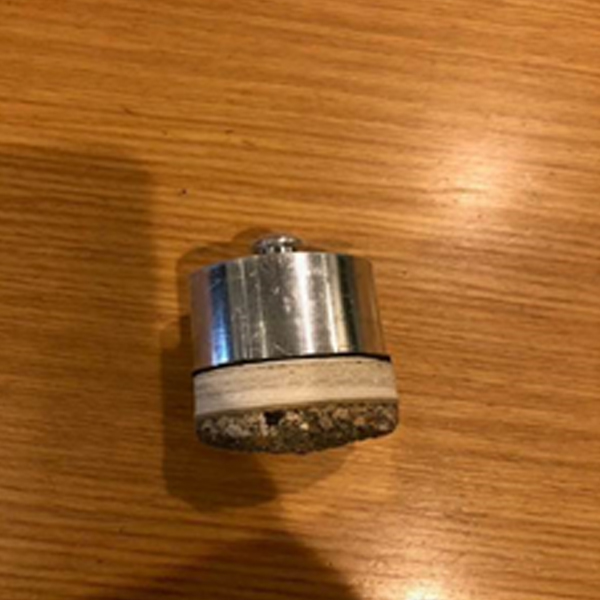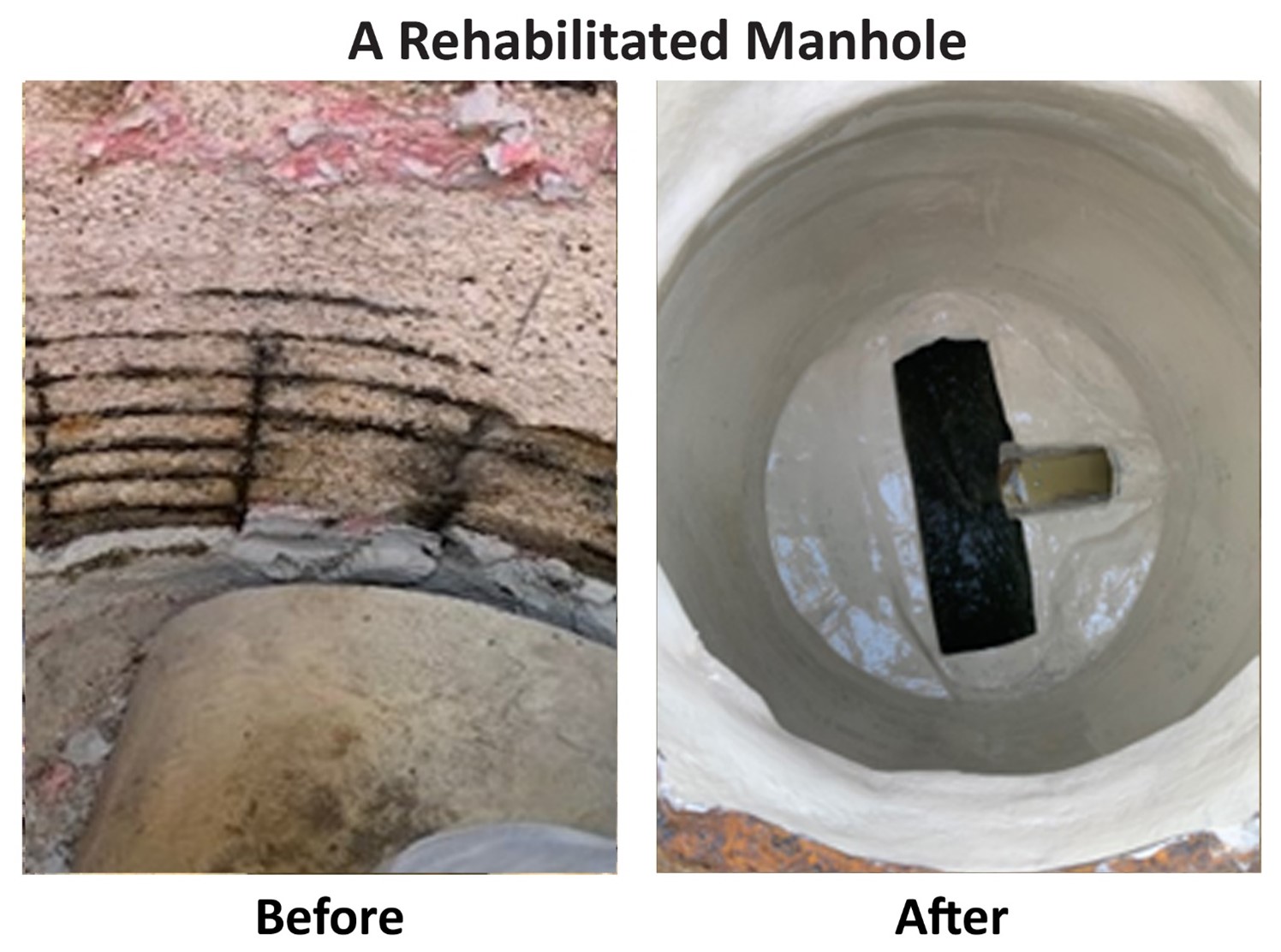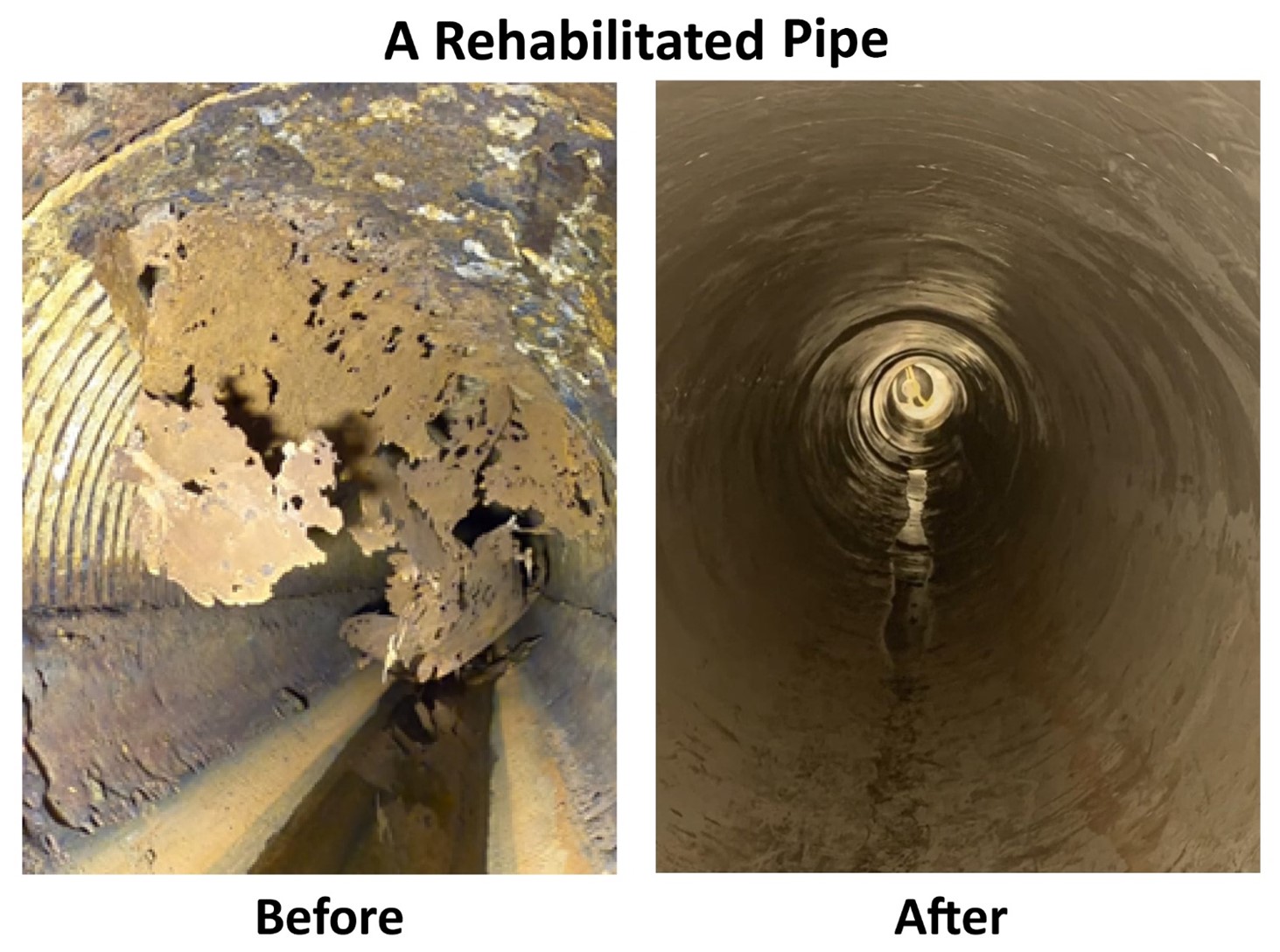About Resinating LLC® and its EIPI Technology™
Resinating LLC, a company with roots in the fiberglass industry that date back to 1959, has been manufacturing fiberglass liners for wastewater, stormwater and freshwater systems as well as industrial systems through its sister company, Associated Fiberglass Enterprises (AFE). In fact, AFE invented slip liners in 1975. Headquartered in Fort Worth, Texas, it has sold in the area of $100,000,000 worth of its fiberglass liners since 1975. You can find a section on our history on The Better Choice Page of our website.
We believe you will find the entire Resinating LLC website to be quite interesting and worth your time to review. This brochure will provide a lot of perspective on EIPI Technology. It will also serve as a guide through our website as well as provide links to many important sections and topics. Resinating LLC’s patented EIPI Technology is a true technological breakthrough when it comes to rehabilitating manholes and connecting pipes. It is clearly a far better solution than any other available option. We think of EIPI Technology as The “Forever” Rehabilitation Solution.
Building on that brief background, Resinating’s patented Expand-in-Place Integration (EIPI) Technology, blends the strength of Resinating Fiberglass Expansion Liners with an innovative installation process to rehabilitate manholes and connecting pipes that are in need of repair.
Resinating’s EIPI Technology is a simple yet powerful trenchless technology. A compressed Resinating Fiberglass Expansion Liner is inserted into a manhole or pipe, and securely bonded as it is expanded to the existing walls of that structure using Resinating’s Proprietary Bonding Agent. The result is a single, solid, integrated, structural unit, one that’s leakproof and stronger than the existing structure was when it was new. Being bonded to the substrate, the Resinating Liner becomes one with the substrate. That’s what “Integration” means!

This Pull-Test photo demonstrates another way to think of “Integration”. It shows the strength of Resinating’s EIPI Technology. The pull-plug is secured to the Resinating Liner by a special epoxy provided by the testing lab. The Resinating Liner is then bonded to a wet 3,000psi concrete with a thin layer of Resinating’s Proprietary Bonding Agent.
When increasing force is applied to the pull-plug, you can see that the first thing to break is the concrete! The bonding agent secures the Resinating Liner to the concrete so tightly that there is no delamination, creating a leakproof barrier that delivers unequaled structural integrity. What other rehabilitation option can perform like this?
Resinating’s EIPI Technology doesn’t “line” an existing structure…
…it becomes an integral part of that structure
…ready to perform flawlessly for decades to come.
Resinating Fiberglass Expansion Liners are available in diameters ranging from 30″ up to 192” with section lengths up to 30’. They can be fabricated into virtually any shape, including cylindrical, tapered, non-round, boxed, arched, etc, and are effective with all types of substrates, ranging from RCP and Brick to CMP, VCP, PVC, Cast Iron, etc.
EIPI Technology can be used to rehabilitate wastewater, stormwater and fresh water systems as well as many industrial systems that carry liquids. It can rehabilitate manholes, pipes, junction boxes, lift stations, culverts, etc encompassing a wide range of geometries with repairs that will last for decades. Resinating Liners are impervious to corrosion from any of the chemicals found in municipal water systems and many industrial settings as well.
Resinating’s EIPI Technology delivers a unique set benefits not available with any other rehabilitation option. EIPI Technology is the technological equivalent of “5G” for the cell phone industry…it will obsolete everything that has come before it.
- EIPI Technology is warrantied to be 100% leakproof for 20-years and is likely to remain leakproof for its useful life of 100 years or more…our fiberglass is solid fiberglass, no fillers, which makes it essentially indestructible. Hence, The “Forever” Rehabilitation Solution phrase.
- EIPI Technology is strong, adding an unequaled level of structural integrity to every project, leaving each rehabilitated manhole, pipe or other structure far stronger than it was when it was new. ASTM tests we have run show structures lined using EIPI Technology are 50% to 100% stronger than they were when they were
- EIPI Technology is trenchless…it can even renew collapsed pipes in many instances, pipes that would otherwise be planned for replacement.
- EIPI Technology is a high-flow solution when pipes are being It has little if any impact on the flow capacity of a pipe due to its low profile (typically 1/4″ to 1/2″ thick) and the very low coefficient of friction associated with the smooth interior of the fiberglass liner. Lining a pipe with EIPI Technology might well improve its flow capacity.
- EIPI Technology is environmentally friendly with no health hazards…no VOC’s or styrene is emitted on the job site…all curing is done in our plant.
- EIPI Technology is hugely cost-effective as it conserves capital
Another section on The Better Choice Page lists many additional benefits associated with EIPI Technology delivering a set of benefits that cannot be obtained from any other rehabilitation option.
EIPI Technology is The Better Choice, not just another option, a far better choice than any other rehabilitation technology for rehabilitating manholes and connecting pipes. The reactions of our customers prove that.
- “Resinating Fiberglass Expansion Liners and the technology associated with them are cutting edge and far surpass any other options available.”
- “I couldn’t be more delighted with what it’s seen from RESINATING.”
- “I’m glad we finally found a solution for repairing our aging ”
Why do customers react this way? Here are examples of what EIPI Technology can do when it’s used to rehabilitate a manhole, a pipe or a culvert.

7 years after the first application of SIPP and 3 years after the second application of SIPP installed to reduce infiltration, this utility decided to install a Resinating Fiberglass Expansion Liner using EIPI Technology to resolve its continuing problem. After removing the SIPP the level of damage done to the precast manhole by sewer gases getting behind the SIPP became apparent, as shown in the “Before” photo, which shows the rebar above the protruding lateral.
After power washing the manhole thoroughly, the Resinating Liner, which had been compressed to fit into the manhole, was expanded and bonded to the wall of the manhole. To accommodate the protruding lateral, a hole was precut in the liner so the liner would slide over the lateral.
The invert then had a new fiberglass liner bonded in it after which a new floor was bonded in place. Sand was spread on the top of the floor so the floor wouldn’t be slippery. Of note, as is typically the case, no bypassing was required to line the invert because the flow in the invert was below the level of the floor,
After the above work was completed, the seam on the liner and the joints where the floor meets the wall and where it meets the new trough were glassed as was the joint between the protruding lateral and the liner as shown in the “After” photo. Not shown in the “After” photo is the fiberglass ladder which we attached to the new Resinating Liner.
The result — a single, solid, integrated, structural unit, one that’s leakproof and stronger than the existing structure was when it was new, ready to perform flawlessly for decade after decade.

The 600’ long, 30” diameter pipe shown in the photos above was only 30” on the bottom half of the pipe. The top half was 33” in diameter as the “Before” photo shows, exposing the rebar, because the RCP suffered from serious deterioration from sewer gases. After a multitude of obstructions was cleared from the pipe and the pipe was thoroughly power wasted, the rehabilitation work began.
The substrate was sprayed with Resinating’s Proprietary Primer, which enables Resinating’s Proprietary Bonding Agent to cure underwater as needed.
As the work progressed, section after section of compressed Resinating Liners were winched down the pipe, expanded, and bonded to the bottom half of the pipe. After the seams and joints were glassed, injection ports were cut into the top half so that the annular space resulting from the 33” diameter on top could be filled, creating, as with the manhole above, a single, solid, integrated, structural unit, one that’s leakproof and stronger than the existing structure was when it was new, ready to perform flawlessly for decade after decade.
The work we do to rehabilitate pipes, is very similar to the work we do to rehabilitate culverts, whether they were originally constructed with CMP or pre-cast concrete.

When we rehabilitate CMP culverts, particularly ones with bolts, we bond the liners to the CMP at the ends of the culvert and potentially bond some intermediate joints to the CMP as well, grouting the annular space that’s created by the valleys in the CMP and the bolts. We are essentially sliplining the culvert, which we can do on other projects as well, if required.
If the culvert is made from a concrete pipe or another substrate with a relatively smooth surface, we would bond the Resinating Liners to the substrate as we would do when rehabilitating a typical pipe. In both cases, the structural integrity designed into the Resinating Liner will provide the support the rehabilitation of a fully deteriorated culvert requires.
Transitioning back to the narrative, on The Better Choice Page of the website, there is important information available that’s really a “must read” in the CIPP and SIPP sections:
- Among many other points, the CIPP section has an analysis of data from 20 miles of pipes lined with CIPP that Electro Scan, Inc. inspected. Their patented FELL technology shows that substantial levels of continuing infiltration occured when CIPP was used to rehabilitate a collection system, generating significant ongoing wastewater treatment Their data shows that 84% of CIPP lined pipes had defect flows on average every 8’, each defect having an average infiltration of 11 GPM during infiltration periods.
- Important video links, located in the table in the CIPP section, show the reality of what can occur when CIPP is used as a rehabilitation option.
The Better Choice Page also has a section dealing with why Resinating Fiberglass Expansion Liners and EIPI Technology are superior option compared to Trench & Replace. Resinating Liners can even rehabilitate many collapsed or seriously damaged structures.
No matter what rehabilitation options might be considered, EIPI Technology delivers the superior performance you would expect from the next generation technology for rehabilitating manholes, pipes and other structures.
As to the “structural integrity” mentioned above, the detail behind the increased structural integrity delivered by Resinating Liners and EIPI Technology can be found on the Tech Data Page of the Specifications and Tech Data Tab. Information on the various ASTM tests that have been done as well as links to the original lab reports can be found there. The tests include C497 tests versus RCP and Hobas, the Pull Test mentioned above and a D790 test.
The Specifications and Tech Data Tab also has sections relating to the Specifications for using EIPI Technology to rehabilitate both pipes and manholes…both as narratives and in CSI format.
To see EIPI Technology in action, review the Installation Examples tab on our website.
- The top thumbnail links to a 2 ½ minute video of a rehabilitation we did, rehabilitating a 600’ pipe, 30” in diameter. As you can see, the “before” and “after” segments at the beginning of the video show what a difference Resinating Liners can make…a difference that provides faultless performance for decades. Interestingly, this pipe is essentially below the level of the water table yet there is not a tear drop of water to be seen on the inside of the pipe on the run through at the end of the video…quite a contrast to what one might find with CIPP.
- The second thumb nail links to a 1 ½ minute video of a rehabilitation of two 20’+ deep manholes with a section of collapsed pipe connecting them.
- The bottom thumbnail links to a 47 slide, slide set that documents the rehabilitation of a tapered brick manhole.. It shows in more detail the process used to rehabilitate manholes, in particular, and pipes and other assets, in general.
From the Home Page to Products to Contact Us, the entire site is very informative.
In summary, when you ask “How Does EIPI Measure Up?” versus two popular rehabilitation technologies – CIPP and SIPP – this is what we see as the answer to that question.

Additional backup to the claims in the EIPI column is available…EIPI is simply a superior option.
We look forward to discussing Resinating Fiberglass Expansion Liners and EIPI Technology in more depth with you, comparing its benefits to any other rehabilitation technology that you might be considering, and to exploring with you how EIPI Technology can be applied to the challenges you face on an ongoing basis.
EIPI Technology…The “Forever” Rehabilitation Solution!
